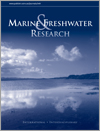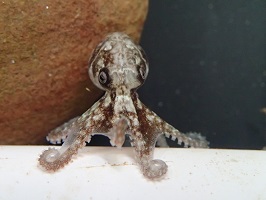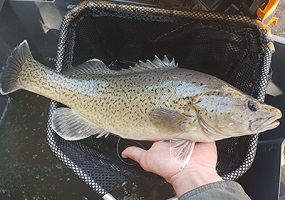Marine and Freshwater Research
Volume 75
Number 6 2024
Schizocypris altidorsalis is a freshwater fish only documented within a drying water reservoirs, on the border of Iran and Afghanistan. This study investigated the occurrence of highly host-specific monogenean parasites in this fish. A new species, Paradiplozoon jalalii, was found for the first time. Unless concerted efforts are initiated to restore their habitats, there is a significant risk of extinction for both species.
We calculated the social and economic contribution of the shark fishery operating in Western Australia, one of the world’s few sustainable shark fisheries. We found substantial management-driven reductions in fishing effort and improvement in catch rates. This fishery provides considerable socio-economic returns to regional economies, with an average annual market value of A$32.6 × 106.
This perspective provides empirical data on the Ramsar Convention and gender equity. This paper assessed how Ramsar Convention complied with its own goals for gender mainstreaming in 2018, guided by the Global 2018 Gender and Wetlands Resolution agreed upon by 171 nations. The data were derived from National Reports from around the world. The findings shed light on the room for improvement in gender mainstreaming and gender equity in the wetland science and policy.
Currently, little information exists describing population structure of great hammerhead sharks (Sphyrna mokarran) in Australian waters. This study used genetic techniques to investigate structuring across the Indo-Pacific. No fine-scale population structuring was observed in Australia; however, structuring occurred for all Australian sharks when compared to those in the Red Sea. Findings suggest a single population for great hammerheads in Australia.
Lack of age data is a critical limitation in assessing the resource status of octopus. However, only a small number of researchers have the hands-on knowledge to execute these methods in the laboratory. Here, we present the first step-by-step guide to ageing octopus. We hope it will enable researchers new to ageing to undertake the process, as well as make an informed decision on the most suitable ageing method for their octopus species. (Photograph: E. D. Durante.)
We investigated the immune responses in the respiratory tree of sea cucumber (Apostichopus japonicus) to high temperature, oil pollution, and the combined stress of high temperature and oil pollution. We found that acute exposure to oil pollution may have affect the immune function of sea cucumbers, whereas high temperature may exacerbate the health challenges of sea cucumbers subjected to environmental stress.
To explore climate effects on tiny aquatic life, we delved into how changes in water conditions affect Moina micrura, a small freshwater creature. Results showed that extreme pH harms the offspring and slows the heartbeat of this species, but warmth and longer daylight boost the numbers. Interestingly, M. micrura produces more males when food is scarce. This research informs strategies to protect these creatures in our tropical waters.
The InVEST water-yield model and support-vector regression (SVR) model were utilised to assess and forecast the ecosystem water-regulation value in Qinghai Area of Qilian Mountain National Park, China. The research showed that grassland plays a crucial role in regulating water, with an anticipated increase in both physical and monetary values by 2030. To further enhance monitoring efforts, it is recommended to establish an ecological big-data platform within the park.
Exploring what fish eat is important to understand how changes in the environment can affect their lives. In this study, we looked into the diet of an Amazonian catfish in a river affected by the construction of a dam. We found that the catfish mostly fed on sediment and aquatic insects, and these feeding habits were not strongly influenced by changes in the local water levels.
Crayfish are important freshwater invertebrates both ecologically and economically. In Turkey, there is no aquaculture of this species, and it is solely produced through fishing. Owing to poor size selectivity of the fyke-nets used in harvesting this species, the rate of undersized catch is quite high (40.7%). This study aimed to enhance the size selectivity of fyke-nets through various manipulations.
This study investigated habitat use and movements of trout cod using radio-telemetry. Trout cod typically occupied small (<300 m) reaches of stream, undertook larger-scale movements and moved onto inundated riparian habitats during high flows. It occupied deeper water bank during the day and shallower water during the night and used areas with slower velocities more than was their availability. It also made extensive use of in-stream cover (i.e. wood). (Photograph by W. M. Koster.)







